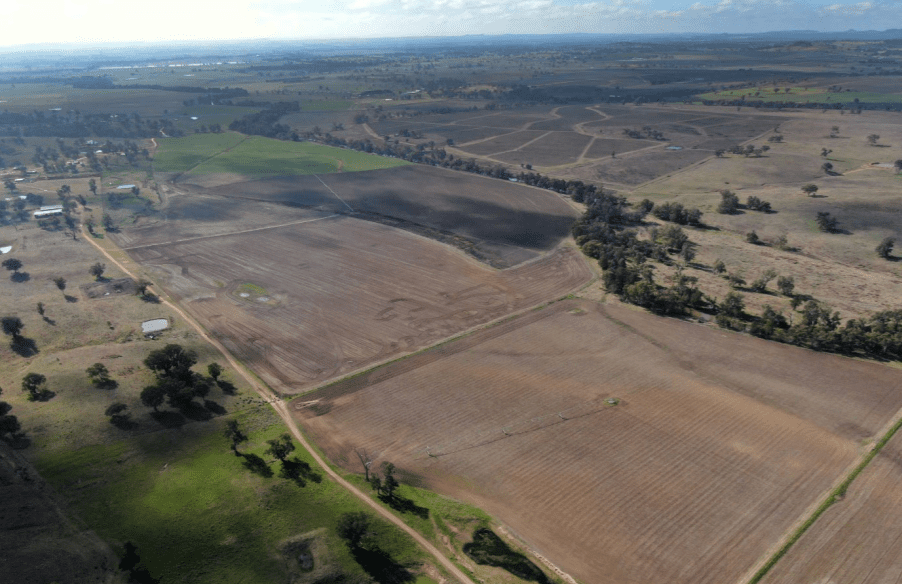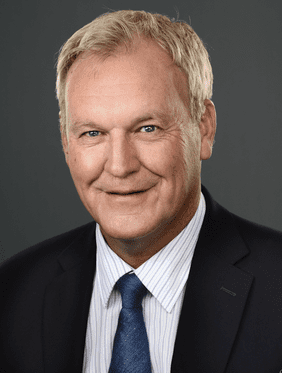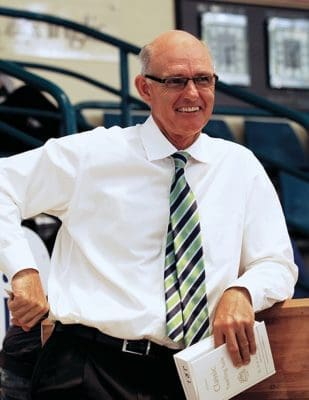
Biraganbil, one of Mudgee’s finest landholdings, was purchased in an off market deal by a Sydney based investor looking for a large parcel of land.
AGRICULTURAL properties have become a new asset class for well-heeled city-based investors seeking to diversify their portfolios. This week, two specialists explore this growing trend in investment.
Rural property marketing specialist Gary Johnston from Forbes-based Johnston Rural Group said rural properties in his region are generating a significant level of interest, with inquiry coming from local operators, graziers from western and southern parts of New South Wales, city-based investors and corporates.

Gary Johnston
Mr Johnston said city-based investors are also looking towards agriculture as a new asset class.
“These people know very little about farming and want someone they can trust to hold their hand. They are looking to diversify their portfolios and are also showing genuine interest in these investments,” he said.
“Many see merit in the tangible aspect of these projects and their ability to visit a farm from time to time.”
Mr Johnston has observed city-based investors showing interest in agricultural assets for the last five years.
“People are hearing good things about what is going on in the country – particularly high commodity prices and rising land values.”
However, he warned that the rural property space was historically a stepping plateau market.
“The market usually steps and then plateaus for five to seven years before running again. So, investors need to be buying for a minimum of five to ten years – and most are happy to hold an asset for that period of time.”
Passive, long-term capital
He said most city-based investors are seeking a passive, long term, capital investment that can be managed by someone else.
“That means they don’t want exposure to the holding’s day-to-day operations and they don’t want to invest in underutilised, depreciating assets like machinery. They would prefer someone else to take care of that.”
“Investors are looking for an expert with ‘skin in the game’ to identify, acquire and organise the leaseback arrangement or form a joint venture with a successful operator,” Mr Johnston said.
He said joint ventures had become an opportunity for many existing producers.
“This means the original landholder can continue to operate the farm, in full or part ownership with the investor, and use their share to enable succession planning.”
Mr Johnston said city-based investors did not need an asset located close to a capital city.
“They are primarily looking for value. Investors are seeking a 10 to 12 percent return – a seven percent capital gain and a three to four percent income yield.”
He said it was difficult to compete with local landholders vying for properties in the sub-$10 million market.
“However, many producers would struggle to acquire properties above $10 million. These assets are targets for investors who often pool their money to acquire larger scale holdings.”
In 2016, Mr Johnston put together the Agri Property Group for new investors pursuing sustainable agricultural projects.
Together with four other passive investors seeking exposure to the agricultural asset class, Mr Johnston purchased the 10,177ha North Kiagarthur, which once formed part of S. Kidman’s 30,000ha Kiagarthur Station at Condobolin in central New South Wales.
Owned by Roger Fletcher, founder of Fletcher International Exports at Dubbo, the former BRW rich-lister continues to lease the property today.
In more recent times, investors have also shown increasing interest in properties with carbon project opportunities which adds another element of risk mitigation and diversification to their asset.
Jamie Inglis, Inglis Rural Property
Jamie Inglis is the director of rural property at Sydney-based Inglis Rural Property, a division of William Inglis and Sons.
He said there was an enormous appetite from city-based investors for good quality rural assets at present.

Jamie Inglis
“There have been more people approach us wanting to buy rural properties than ever before, and I have been in the game for well over 45 years.”
Mr Inglis said his business engages with a wide array of wealthy potential investors, many of whom were looking for rural assets. He cited a recent successful off-market transaction.
“A very good client approached us wanting to buy a ‘nice place’ which we managed to find for him. This required us to approach a family privately and to inquire as to whether they would be interested in selling.”
“We disclosed to the property owner that we had a motivated cash buyer looking for a large parcel of land in the region and after several inspections, contracts exchanged.”
In the last two years, the rural property team at Inglis had transacted more than $100 million worth of off-market deals in New South Wales and Victoria.
In fact, Mr Inglis has been on the phone this week trying to buy a 12,000ha farm for a client and is currently negotiating an off-market transaction for some cashed-up western Sydney clients.
COVID factor
He said without a shadow of a doubt, COVID had played a part.
“It has contributed to the ‘wave’ effect. City residential prices are through the roof and so are coastal holiday retreats. House prices in rural residential areas such as Mudgee, Orange and Bathurst have doubled in recent years.”
Mr Inglis said rural property was seeing a new wave of investment.
“Over recent years, Australian agriculture has had great exposure and commentary on returns – the property market is high, commodity prices are extremely strong and most producers are doing exceedingly well. On top of that, money has never been cheaper.”
He said in addition, seasons had been phenomenal.
“Never before have we seen seasons go back-to-back-to-back like this. Starting in 2020, there was an outstanding autumn in southern Australia, a soft winter, magnificent spring, wet summer and then that was repeated through 2021. That is rare and it put rural industries in the spotlight.”
Mr Inglis said the new investment had been propelled by neighbours and family farmers trying to expand.
“It is certainly impacting the property market. There are plenty of first-time investors pursuing and buying rural holdings and absentee owners who need a manager are seeking scalable assets to support a workforce.”
He said a percentage of purchasers wanted reasonable access to their assets, but it was always difficult to source properties close to capital cities.
“Corporates don’t care where they buy as long as the property meets their criteria or brief. Some investors are seeking a well-run operation that is making good money, while others find the rural lifestyle appealing and want to spend time at their new property.”
Mr Inglis said those pursuing ag assets were looking for a return.
“People are finally starting to realise that rural holdings are a safe bet. Most investors are looking for a reasonable return of about 2.5 to 4 percent.”
